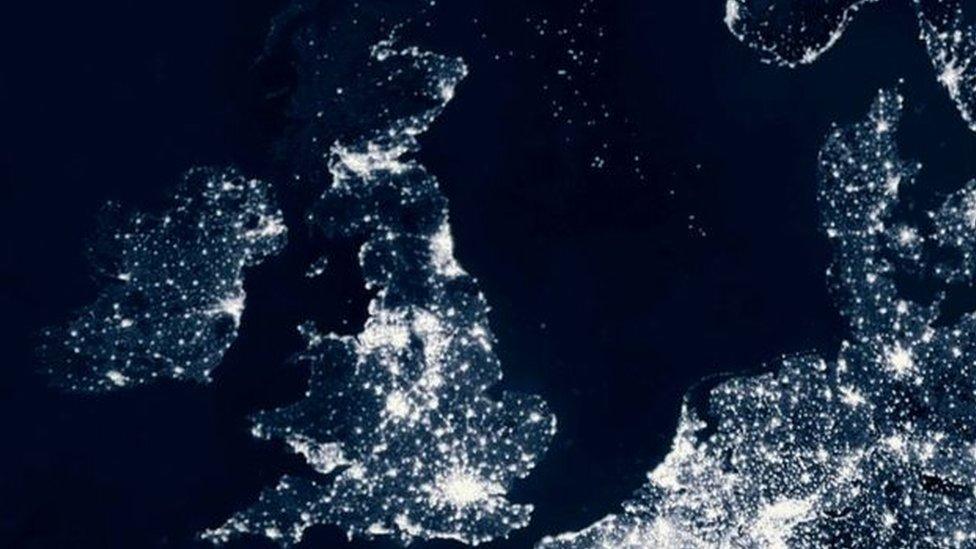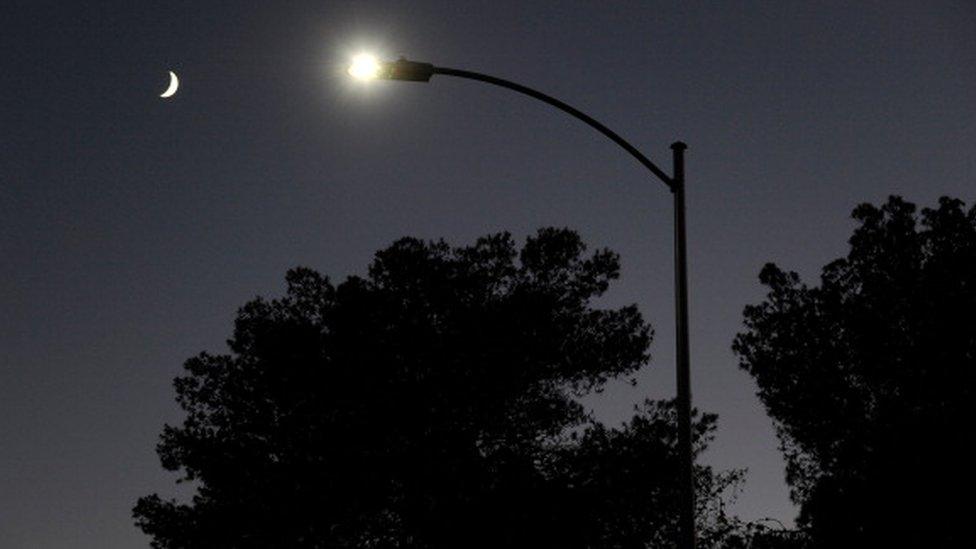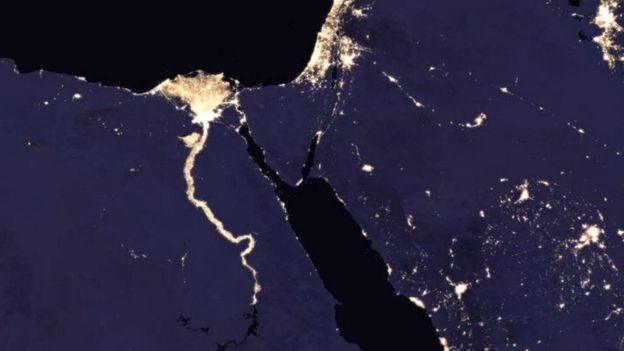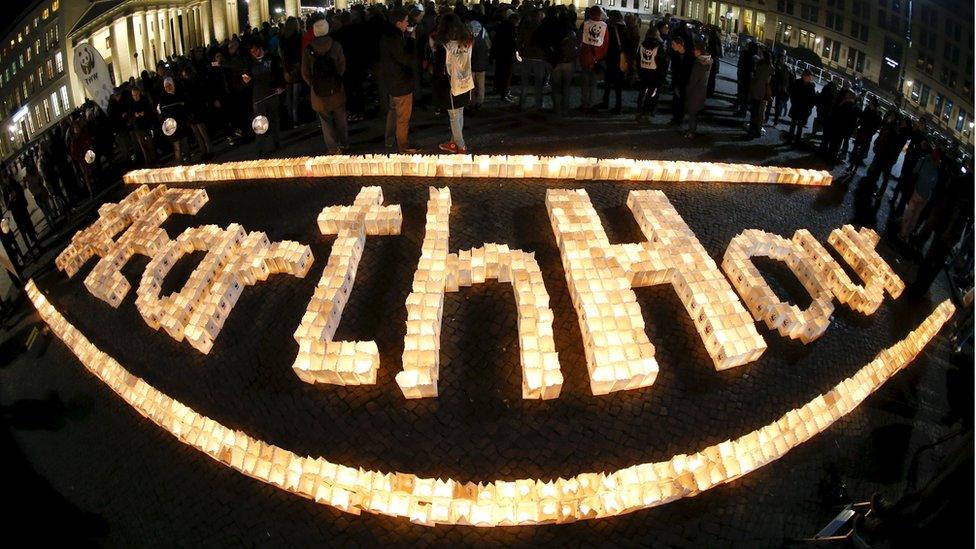How the 'loss of night' hurts us and the environment
- Published
Artificial light means Earth is starting to 'lose night'
These pictures look pretty, don't they? The Earth from space, all in darkness but lit up by millions of tiny lights.
Pictures of the Earth by night show artificial light growing brighter and more extensive every year.
Between 2012 and 2016, the amount of planet Earth being lit up with artificial lights grew by more than 2%, every year.
Scientists say that this is resulting in a "loss of night" in many countries.
This can have negative consequences for animals, people and plant-life.
Researchers used a device specially designed by Nasa to measure the brightness of night-time light.
What's the picture around the world?
Nasa's special tool, called a radiometer, shows that changes in brightness over time varied by country.
Researchers had expected the wealthiest countries in the world to show less night-time light, as these countries switched from sodium lights to LEDs, which don't appear as brightly on the satellite images.
But many rich nations stayed just as bright, with city areas in the US, UK, and Europe becoming even brighter.

The higher levels of light in city areas are clear from the aerial images

In India the difference between regions wasn't as great
Brightness also increased in developing nations - like India, and parts of South America, Africa and Asia.
Only a few countries showed a decrease in brightness, such as Yemen and Syria - both countries currently experiencing difficult wars.
Why does it matter?

Many street lights have been replaced by new energy-efficient LEDs
Night time light, especially blue light from LEDs, can affect our sleep and health.
In the environment it can change the behaviour of nocturnal animals - those that are most active at night.
Nocturnally migrating birds can be particularly badly affected.
Another study found that artificial light is also a threat to crop pollination - an important part of crops and plants growing.
Artificial night-time light reduced the activity of nocturnal insects, who help pollinate plants.
It could even shift some of out planet's seasonal patterns.
Scientists saw trees in more brightly lit areas opening their buds up to a week earlier than in areas without this kind of lighting.
Is it time to turn down the lights?

The images show the Nile river region in North-west Africa surrounded by light at night
Christopher Kyba, a scientist who looks into this issue in Germany, called the introduction of artificial light "one of the most dramatic physical changes human beings have made to our environment".
He suggests we might be able to reduce the amount of artificial light we have in city areas, but without making it harder to see at night.
He says because "human vision relies on contrast, not the amount of light, so by reducing contrast outdoors - avoiding glaring lamps - it is actually possible to have improved vision with less light."
"This could also lead to big energy savings, but our data show that on a national and global scale, this is not the direction we are heading."
- Published28 November 2012

- Published20 March 2016

